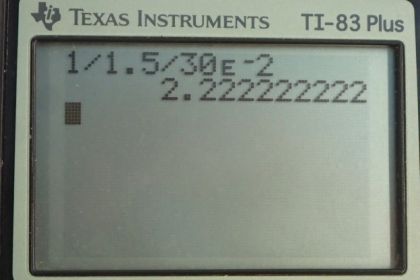Question
At what speed must the sliding rod in Figure 23.11 move to produce an emf of 1.00 V in a 1.50 T field, given the rod’s length is 30.0 cm?

Final Answer
Solution video
OpenStax College Physics for AP® Courses, Chapter 23, Problem 19 (Problems & Exercises)

vote with a rating of
votes with an average rating of
.
Calculator Screenshots
Video Transcript
This is College Physics Answers with Shaun Dychko. We're going to figure out what speed this rod must move in order to have an induced EMF of one volt. Given the magnetic field strength of one and a half Tesla and a length of 30 centimeters. So, we have a formula for the EMF induced in the moving rod, assuming that the magnetic field length and velocity are all mutually perpendicular, which they are here. And, we can solve this for V by dividing both sides by B L and then switching the sides around. So, V is induced EMF divided by magnetic field strength time length. So, that's one volt divided by one and a half Tesla times 30 times ten to the minus two meters, which gives 2.22 meters per second.
